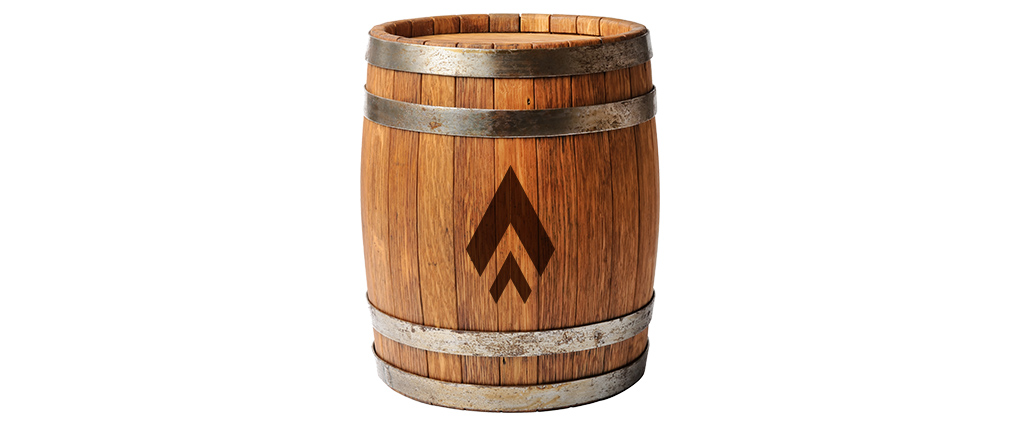Bourbon whiskey has been around in the United States – in one form or another – for close to 200 years. Since the first time the word “bourbon” appeared in print in 1821, to 2007 when the U.S. Senate recognized the month of September as “National Bourbon Heritage Month,” bourbon whiskey has become an intrinsic piece of America’s food and beverage culture. It is mashed in New York’s Hudson River Valley, fermented in Chicago, distilled in the peaks of the Rockies, laid down in Minnesota Oak barrels and bottled in the foothills of Kentucky.
And yet, somehow over the past 200 years bourbon has taken on a bit of a folklore status: some fact, a little fiction, and a lot of questions. How well do you really know bourbon? Let us help you clear through the confusion and test your knowledge on some of bourbon’s most frequently asked questions.
 True or False: All bourbon comes from Kentucky.
True or False: All bourbon comes from Kentucky.
False. Kentucky is the birthplace of bourbon whiskey and 95 percent of the world’s supply is made in the Blue Grass State. That said, bourbon does not need to be produced in Kentucky. According to the Alcohol and Tobacco Tax and Trade Bureau, there are four requirements for the production of bourbon:
1.) It’s produced in the United States
2.) It is made with a minimum 51% corn content
3.) It is distilled to no higher than 160 proof
4.) It is put into a charred, new oak barrel at no higher than 62.5% ABV
No matter where the whiskey is made in the U.S., as long as it meets those four parameters, then it is “authentic” bourbon.
 What makes Kentucky ideal for bourbon whiskey production?
What makes Kentucky ideal for bourbon whiskey production?
Kentucky’s climate and natural limestone water are two of the main reasons the state is ideally located for bourbon production. Kentucky’s hot summers and cold winters force the whiskey in and out of the barrel’s staves, which ages the spirit quicker than it would in a cooler climate, such as Scotland or Ireland. Also, Kentucky has access to soft and flavorful limestone water, which in turn gives Kentucky bourbon its characteristic soft palate and minerality.
 How many years must a whiskey be aged before it’s considered a bourbon?
How many years must a whiskey be aged before it’s considered a bourbon?
Zero! Bourbon has no minimum age requirement. The exception to this rule is “straight bourbon,” which must be aged for a minimum of two years. In order to be called a straight bourbon, the whiskey must not only be aged for a minimum of two years, but it must also not having any coloring, flavoring or additional spirits blended into it.
 True or False: Older bourbon is always better.
True or False: Older bourbon is always better.
False. The current demand for bourbon with an older age statement is at an all-time high; however, those higher age statements don’t necessarily mean higher quality. The more time whiskey remains in contact with the wooden barrel, the more it picks up that woodsy spice and takes on a dry, tannin-like character. Too long in the barrel and the whiskey dries out even further, losing some of the balanced layers and depth that it had when it was younger. So is older bourbon better than younger bourbon? Not necessarily, but it really is a matter of personal taste.
 Do bottled-in-bond bourbons have different production requirements?
Do bottled-in-bond bourbons have different production requirements?
Yes. The term bottled-in-bond is a legal one, and it refers to the Bottled-in-Bond Act of 1897. This act ensured that any whiskey bearing the name ‘bottled-in-bond’ was produced by the same distiller, at the same distillery, during the same distilling season, aged for at least four years in newly charred American Oak barrels, unadulterated except for dilution water and bottled at exactly 100 proof.
The act was created to protect consumers from distillers who tainted their product with fillers or flavorings. Everything from vodka to everclear was sold as ‘whiskey’ at that time, with artificial colorings added to help sell the disguised spirit.
 True or false: Jack Daniel’s Old No. 7 is technically a bourbon.
True or false: Jack Daniel’s Old No. 7 is technically a bourbon.
FALSE! Despite some pretty strong similarities, Jack Daniel’s Old No. 7 is classified as a Tennessee whiskey, and not a bourbon for one specific reason: Jack Daniel’s is filtered through maple wood charcoal before being put into oak barrels, which is an extra step that isn't included in making bourbon. Consumer favorite George Dickel is considered a Tennessee whiskey as well for the same reason.
Do you still have some burning bourbon questions? Reach out to your Breakthru Beverage Sales Consultant and we’ll help set up a training for you and your team.
